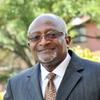
The environmental burdens communities of color have borne
The effects of racism on our country and in our communities have been a welcome topic during the Democratic primary race. From the impacts of policing to education to economic opportunity — even to busing — we have seen candidates discussing how to confront the enduring legacy of racist policies.
But a form of systemic oppression — one that holds back our community, sickens our children and cuts our lives short — has been nearly absent from the debate stage: environmental racism. It is fitting that the party’s next debate will be at Texas Southern University, where pioneering legal theories and sociological research in the 1970s laid the foundation for the national environmental justice movement.
My four decades of environmental justice research show that millions of Americans have the “wrong complexion for protection.” ZIP code is a better predictor of health than genetic code. Race is still more potent than income in predicting the distribution of pollution. This is not just a Texas problem. People of color in 46 states live with more air pollution than whites, Environmental Protection Agency scientists found in 2018.
For decades, communities of color in Houston and across the nation have borne a disproportionate burden from this toxic threat. A recent study, for example, found that African Americans are exposed to about 56 percent more pollution than is caused through their consumption of goods and services. For Latinx people, it is even higher, at 63 percent. It’s time for whites to stop dumping their pollution on poor and people of color communities.
This pollution inequality is not accidental. Local, state and federal policies enforced segregation, prevented access to reasonably priced mortgages and starved black communities of resources. Governments and companies, meanwhile, followed this path of least resistance, placing far too many landfills, petrochemical plants and metal recyclers, among other major pollution sources, in and around our neighborhoods.
This leads to sacrifice zones, places where people, mostly of color and low wealth, live beside hyperpolluters and in harm’s way. In Houston, for example, an oil refinery, chemical plant and Interstate 610 surround the Manchester neighborhood, home to roughly 3,000 people. Not surprisingly, the cancer risk for people living in Manchester and neighboring Harrisburg is 22 percent higher than for the overall Houston urban area, according to a recent report by the Union of Concerned Scientists and Texas Environmental Justice Advocacy Services.
Climate change exacerbates this cruel and unjust situation. When Hurricane Harvey dumped trillions of gallons of water across Houston, it also damaged several petrochemical facilities in communities of color and low wealth, sending millions of pounds of harmful pollution into the air. The storm-damaged refinery in Manchester released a plume of cancer-causing benzene into the neighborhood. They had no idea what they were breathing because of slow-footed response by the EPA and state regulators.
The sad truth is that climate change is making storms worse and more frequent.
A warming world also can harm our health and the health of our children by increasing the number of “bad air” days and asthma attacks. That’s because climate change enhances conditions that lead to the formation of ground-level ozone, or smog, the lung-burning pollutant that can trigger asthma attacks.
In Texas, the prevalence of asthma is already greater among African American adults than among white adults. With children, the rate is roughly the same, but studies show black children were hospitalized for asthma three times more often than white children. They suffer at higher rates for many reasons, such as less access to medical care in their communities, including fewer nurses in their schools.
People of color and low wealth also are likely to have less refuge from the extreme heat that is already smothering Southeast Texas. They may work outside. They may be unable to afford air conditioning or medical care, leaving them more exposed to the warming world.
This is a critical moment, and we need those seeking the presidency to define bold climate solutions, such as those included in the Equitable and Just Climate Platform. They must explain how they will move our nation, our shared home, to an economy with 100 percent clean energy while creating jobs and protecting the most vulnerable from the brunt of devastating health and economic impacts.
As the Democratic contenders prepare to debate here Thursday, they would do well to listen to the people in Houston neighborhoods who are exposed to the highest levels of toxic pollution and are on the front lines of climate change — and then tell us how they plan to bring environmental and economic justice to all Americans, especially our most vulnerable communities.
This op-ed originally appeared in the Houston Chronicle.
Bullard is a distinguished professor of urban planning and environmental policy at Texas Southern University and is often called the “father of environmental justice.”
STAY UP TO DATE
The quality of our newsletter is considered satisfactory and poses little or no risk.
SUBSCRIBE

